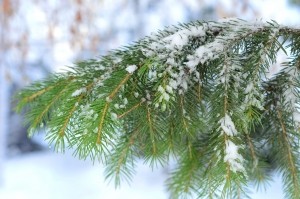Winter burn occurs when the cold winds dry out the leaves of evergreen trees. People often believe that hearty evergreens are exempt from damage from the winter weather. After all, we often see evergreen trees pictured with mounds of snow on their branches, looking beautiful and winter-like. Unfortunately, these beautiful trees can also be affected by cold temperatures.
What happens when the weather gets cold is that the soil freezes and the wintry winds blow, drawing more moisture from the leaves. The tree cannot take moisture from frozen soil, so they cannot replace the moisture that is being lost. As long as the conditions don’t persist, the leaves are able to retain moisture and survive. But if the conditions do keep up, more moisture is lost and the leaves will eventually die. The most common months for winter burn to occur in New Jersey are during January and February.
Not all winter trees are the same, however. Evergreens are more vulnerable, broadleaf types are somewhat susceptible and needle-type trees are the least. Also, the area where the trees are planted makes a difference. Some areas are more prone to windy conditions while others are not. Additionally, if the fall was dry and left the soil drier than usual, this will also affect the amount of moisture being brought to the tree.
Many of our customers ask if there are ways to battle winter burn. Fortunately, there are. Anti-dessicants are chemicals that can be applied to the trees in late November and late January to prevent winter burn. These products should be applied when the temperatures are above freezing. So, if you apply the product, it cannot drop below freezing for 24 hours. This is generally fine in late fall/early winter, but can become a challenge during the second application. However, you should wait for your window of opportunity and use the product then.
Also, if the fall is dry, be sure to water the soil for additional moisture. You can also brush off snow and ice from the trees to protect the leaves.
Blog sponsored by: Horizon Landscape

